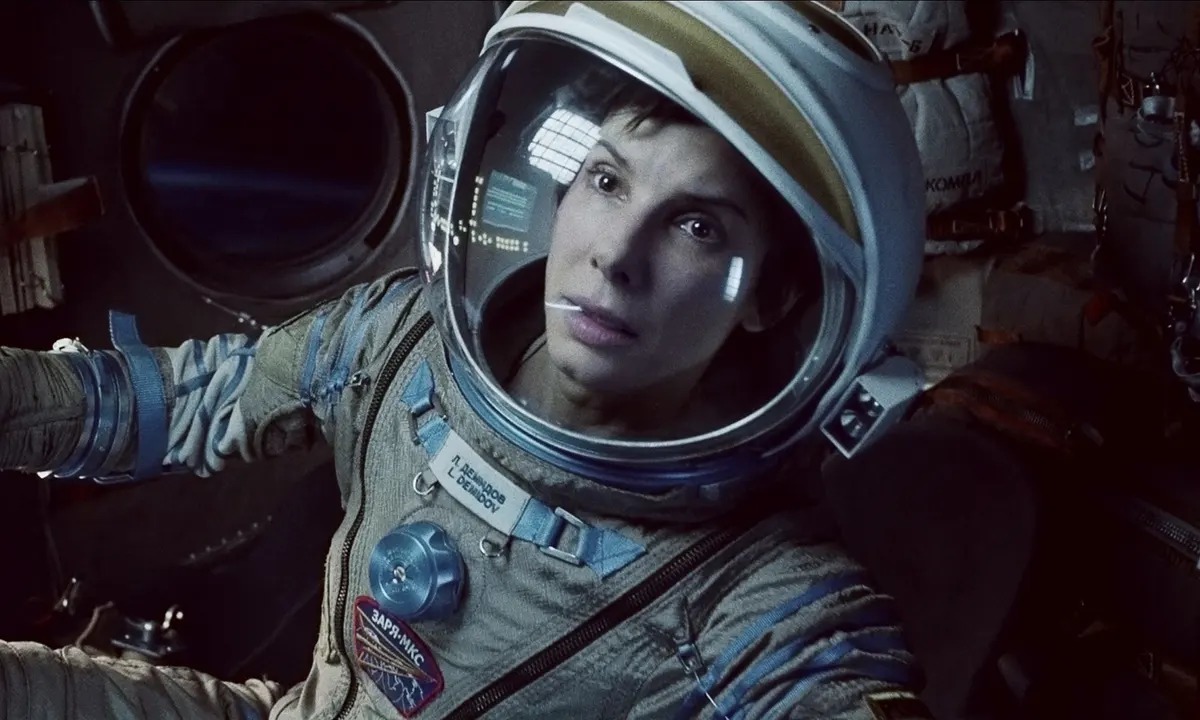Gravity (2013)

Alfonso Cuarón’s “Gravity,” released in 2013, is a breathtaking journey into the vast and perilous realm of outer space. As a science fiction thriller, the film captivates audiences with its stunning visuals, intense storytelling, and profound exploration of human resilience in the face of adversity.
The plot centers on Dr. Ryan Stone (played by Sandra Bullock), a brilliant medical engineer on her first space mission, accompanied by veteran astronaut Matt Kowalski (played by George Clooney). Their mission takes a disastrous turn when their shuttle is destroyed by debris from a satellite, leaving them stranded in orbit. As they struggle to survive amidst the vastness of space, they must navigate through a series of harrowing challenges while facing the looming specter of imminent death.

From the outset, “Gravity” immerses viewers in the stark and unforgiving environment of space. The cinematography, led by Emmanuel Lubezki, creates a sense of weightlessness and isolation, capturing the beauty and terror of the cosmos. The use of long takes and seamless visual effects enhances the film’s realism, drawing audiences into the characters’ desperate struggle for survival.
Central to the film’s impact is Sandra Bullock’s compelling performance as Dr. Ryan Stone. Through her portrayal, Bullock embodies the emotional and physical toll of being adrift in space, conveying vulnerability, determination, and moments of profound introspection. George Clooney’s portrayal of Matt Kowalski provides a counterbalance of humor and seasoned expertise, serving as a source of reassurance and wisdom amidst the chaos.

Thematically, “Gravity” explores themes of isolation, mortality, and the human spirit’s capacity for resilience. Dr. Stone’s journey is not only a physical battle against the harsh elements of space but also a psychological odyssey as she confronts her past and finds the will to persevere against overwhelming odds. The film invites viewers to reflect on the fragility of life and the indomitable strength of the human spirit when faced with existential challenges.
The screenplay, co-written by Alfonso Cuarón and his son Jonás Cuarón, is sparse yet profound, focusing on the visceral experience of survival while weaving in moments of introspection and emotional depth. Dialogues are minimal but impactful, conveying the characters’ inner turmoil and the magnitude of their predicament with stark clarity.

“Gravity” received widespread acclaim for its technical achievements and narrative depth, winning seven Academy Awards including Best Director for Alfonso Cuarón. The film’s groundbreaking use of 3D technology and sound design further enhances its immersive quality, creating an unparalleled cinematic experience that transports audiences into the vast expanse of space.
Beyond its technical brilliance, “Gravity” resonates as a testament to human ingenuity and the unyielding pursuit of hope in the face of despair. It celebrates the courage of explorers who push the boundaries of human knowledge while acknowledging the inherent risks and sacrifices involved in such endeavors.

In conclusion, “Gravity” stands as a landmark achievement in contemporary cinema, pushing the boundaries of visual storytelling and narrative innovation. Alfonso Cuarón’s masterful direction, coupled with Sandra Bullock’s unforgettable performance, elevates the film to a cinematic tour de force that continues to awe and inspire audiences worldwide.
Whether viewed as a thrilling space adventure or a profound meditation on human existence, “Gravity” remains a timeless classic that reminds us of our place in the cosmos and the enduring power of the human spirit to defy gravity, both literal and metaphorical.











